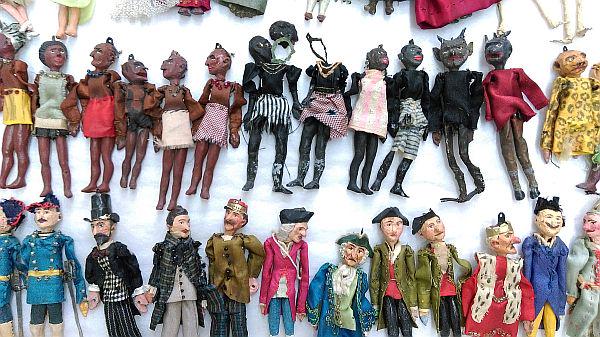
The idea of proclaiming 21 March the World Puppetry Day was given by the Indian puppeteer Dadi Pudumjee in 2002 at the meeting of UNIMA, the International Puppetry Association. A year later UNIMA, established in 1929 in Prague, published the first international message by a distinguished puppeteer; these messages contributed to increasing the popularity of puppets in the world.
This year’s message given by Nancy Lohman Staub emphasises two things: the importance of documenting traditional puppetry – UNESCO recognized twelve of traditional forms of puppetry as representing intangible cultural heritage, and the importance of publishing performances, festivals, publications, etc., involving puppets on the internet.
A review of data on professional puppet theatres in Slovenia between 2004 and 2015 shows that in individual years they held very different numbers of performances at their headquarters: from only 515 in 2009 to as many as 1,619 in 2012 (Maribor was European capital of culture). In the observed 12 years, puppet shows accounted for between 11% (2004) to 33% (2008) of all theatrical performances.
In addition to own performances, puppet theatres organised performances by theatres on tour. Among all performances at theatres headquarters, the fewest performances on tour were held in 2015 (121) and the most in 2012 (351).
Puppet shows are also held in homes of culture, cultural institutions and cultural centres; on average, 416 performances per year in the 2004–2015 period. Most performances were held by cultural institutions in 2015 (510), but this was only just over 3% of all performances in these institutions.
2015: on average 117 people attending a puppet show
Over the past 12 years puppet shows in theatres were seen by 136,000 people on average (the most in 2008 with 165,000), i.e. on average between 100 (2014) and 204 (in 2005) people per performance. Understandably, most people attending the shows were children and youth, between 70% and 90% of people attending the shows.
Detailed data and time series are available on the SI-STAT data portal.
Ida Repovž Grabnar, Statistical Office of the Republic of Slovenia

































































